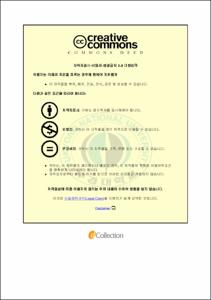유기염소계 농약 endosulfan의 생물학적 분해에 관한 연구
- Alternative Title
- Bioremediation of Organochlorine Insecticide Endosulfan by Bioaugmentation with a Bacterium
- Abstract
- Endosulfan, a organochlorine compound, is widely used as an insecticide all over the world. However, endosulfan is ubiquitous contamination in agricultural environments and considered potential pollutants due to its toxic and recalcitrant properties. To remove toxic organic compounds, both biological and chemical treatments have been suggested. Bioremediation of the toxic organic compounds, using microorganisms or enzymes produced from the microorganisms (bioaugmentation), is often considered as and environmentally favorable method. Therefore, many efforts have been made to isolate bacteria capable of degrading endosulfan. The objective of this study was to isolate a bacterium to degrade endosulfan and to evaluate the possibility of the bioremediation in soil environmental for the degradation of endosulfan. A endosulfan degrading bacterium, K-1321 strain, was isolated by endosulfan-containing enrichment culture from soil and seaside sediment samples. The strain was identified to by Serratia sp. based on the results of morphological, biochemical and 16S rDNA homology analysis. Serratia sp. K-1321 was able to degrade 100% on 10ppm endosulfan within 4 weeks and 100% on 50ppm endosulfan within 6 weeks in the culture media at 25℃. The pH value of the culture media was increased to pH 8.5 from pH 5.8 after 6 weeks of incubation. The experiment in soil, lab-scale model analysis, was performed to two group, sterile soil (Group A) and non-sterile soil (Group B). In soil, Serratia sp. K-1321 was able to degrade 99% of 50 ppm endosulfan within 6 weeks at 25℃ and the pH value of perform was increased to pH 8.2 from pH 5.5 after 6 weeks to began the observation in all group. GC/MS analysis revealed that endosulfan diol was an intermediate of the bacterial endosulfan degradation Considering above results, we concluded that Serratia sp. K-1321 utilized endosulfan as a carbon source and metabolized endosulfan via less toxic pathway such as the formation of endosulfan diol as and intermediate.
- Issued Date
- 2011
- Awarded Date
- 2011. 2
- Type
- Dissertation
- Publisher
- 부경대학교
- Alternative Author(s)
- Park, Mi Eun
- Affiliation
- 부경대학교 대학원 생태공학과
- Department
- 대학원 생태공학과
- Advisor
- 정용현
- Table Of Contents
- Ⅰ. 서론 01
Ⅱ. 이론적 배경 06
1. 유기염소계 농약 06
2. Endosulfan 09
2.1. Endosulfan의 물리화학적 특성 09
2.2. 환경 중 endosulfan의 특성 12
2.3. Endosulfan의 생산 및 사용 19
3. 생물학적 정화 방법 (Bioremediation) 18
3.1. 생물학적 정화 방법 21
3.2. Bioaugmentation 23
3.3. Biostimulation 24
Ⅲ. 실험 재료 및 방법 25
1. 실험재료 25
1.1. 토양 시료 25
1.2. 배양 배지 26
1.3. 사용 시약 26
2. 실험방법 28
2.1. GC/MS에 의한 endosulfan 정량 분석 조건 확립 28
2.2. 토양 시료 내 endosulfan 잔류량 측정 31
2.3. 집식 배양을 통한 endosulfan 분해균의 분리 31
2.4. Endosulfan 분해균의 동정 34
2.5. Endosulfan 분해균의 분해 특성 35
Ⅳ. 결과 및 고찰 39
1. GC/MS에 의한 endosulfan 분석 조건 확립 39
1.1 GC/MS에 의한 endosulfan 표준물질 검량선 작성 39
1.2. 회수율 측정 42
2. 시료 내 endosulfan 잔류량 44
3. 균주의 분리 및 선발 46
3.1. 집식 배양으로부터 endosulfan 분해 우량 균주의 선발 46
3.2. Endosulfan 분해균 동정 48
4. Endosulfan 분해균의 분해특성 54
4.1. Endosulfan 농도에 따른 분해능 54
4.2. 보조 탄소원 농도에 따른 endosulfan 분해능 57
4.3. Endosulfan 분해균에 의한 배지 중의 pH 변화 59
4.4. 토양에서의 endosulfan 분해 특성(Lab-scale model analysis) 60
4.5. 분리균 K-1321 strain.에 의한 endosulfan 분해 경로 분석 64
Ⅴ. 결론 68
참고 문헌 72
Appendix 86
- Degree
- Master
- Files in This Item:
-
-
Download
 유기염소계 농약 endosulfan의 생물학적 분해에 관한 연구.pdf
기타 데이터 / 2.15 MB / Adobe PDF
유기염소계 농약 endosulfan의 생물학적 분해에 관한 연구.pdf
기타 데이터 / 2.15 MB / Adobe PDF
-
Items in Repository are protected by copyright, with all rights reserved, unless otherwise indicated.